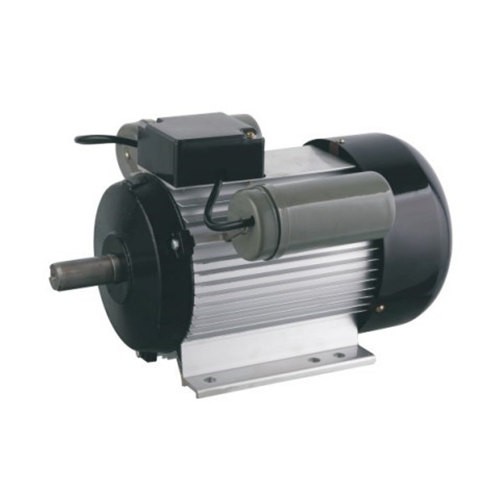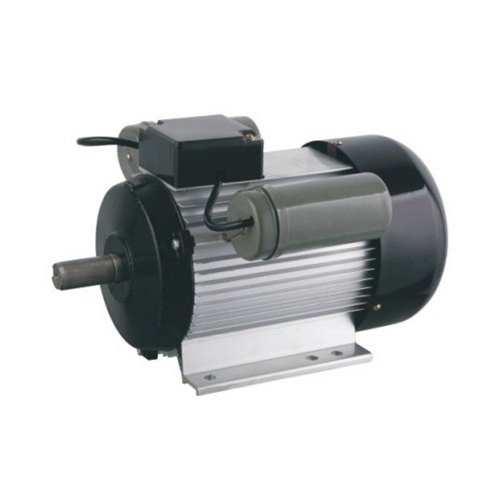Hey there! As a supplier of motors for air compressors, I often get asked this question: "Can a motor for an air compressor be used in a variable - load air compressor?" Well, let's dive right into it and break this down.
First off, let's understand what a variable - load air compressor is. A variable - load air compressor is designed to adjust its output according to the actual demand for compressed air. Unlike a fixed - load compressor that runs at a constant speed and output, a variable - load compressor can ramp up or down depending on how much air is needed. This is super useful in industrial settings where the air demand can fluctuate throughout the day.
Now, let's talk about motors for air compressors. We've got different types, like Three Phase Motor for Screw Air Compressor, Single Phase Motor for Air Compressor, and Electric Motor for Air Compressor. Each type has its own features and is suitable for different applications.
Compatibility Factors
When considering using a motor in a variable - load air compressor, there are a few key factors we need to look at.
Power Rating
The power rating of the motor is crucial. In a variable - load situation, the motor needs to be able to handle both the peak loads and the lower loads efficiently. If the motor is under - powered, it won't be able to provide enough energy when the compressor needs to ramp up. On the other hand, an over - powered motor can be wasteful, consuming more energy than necessary during low - load periods.
For example, if you have a small workshop where the air demand is usually low but occasionally spikes when using multiple pneumatic tools at once, you'll need a motor with a power rating that can handle those short - term high loads.
Speed Control
Variable - load compressors require a motor that can adjust its speed. Traditional motors might run at a fixed speed, which won't work well in a variable - load scenario. Motors with variable frequency drives (VFDs) are a great option here. A VFD allows the motor to change its speed based on the demand, which is essential for a variable - load air compressor.
Let's say you're running a manufacturing plant where the air demand changes throughout the production process. A motor with a VFD can slow down when less air is needed, saving energy and reducing wear and tear on the compressor components.
Torque Characteristics
Torque is the rotational force that the motor can produce. In a variable - load air compressor, the motor needs to have good torque characteristics. When the compressor is starting up or when it's operating at high loads, the motor needs to be able to deliver enough torque to keep the compressor running smoothly.
Some motors are designed to provide high starting torque, which is important for getting the compressor up and running quickly. Others are optimized for continuous - load operation. For a variable - load compressor, you need a motor that can balance both starting torque and continuous - load torque requirements.
Advantages of Using the Right Motor
If you choose the right motor for your variable - load air compressor, there are several benefits.
Energy Efficiency
As I mentioned earlier, a motor with speed - control capabilities can adjust its power consumption based on the load. This means that during low - load periods, the motor uses less energy, resulting in significant cost savings over time. Energy efficiency is not only good for your bottom line but also for the environment.
Reduced Maintenance
When a motor operates within its designed load range, it experiences less stress and wear. This can lead to a longer lifespan and fewer maintenance issues. For example, a motor that doesn't have to constantly work at full capacity is less likely to overheat or suffer from mechanical failures.


Improved Performance
A well - matched motor ensures that the compressor can respond quickly to changes in air demand. This means that your pneumatic tools and equipment will have a consistent supply of compressed air, leading to better overall performance in your operations.
Challenges and Considerations
Of course, there are also some challenges and considerations when using a motor in a variable - load air compressor.
Cost
Motors with advanced features like VFDs can be more expensive upfront. However, it's important to look at the long - term savings in energy costs and maintenance. In many cases, the initial investment pays off in the form of lower operating costs over the life of the motor.
Installation and Setup
Installing a motor with a VFD requires some technical knowledge. You need to ensure that the VFD is properly configured to work with the compressor and the electrical system. It's a good idea to work with a professional if you're not familiar with this type of installation.
Compatibility with Existing Systems
If you're upgrading an existing air compressor to a variable - load system, you need to make sure that the new motor is compatible with the compressor's other components. This might involve some modifications or adjustments to the compressor's control system.
Case Studies
Let's look at a couple of real - world examples to see how using the right motor in a variable - load air compressor can make a difference.
Case 1: A Small Machine Shop
A small machine shop was using a fixed - load air compressor with a standard motor. The air demand in the shop varied depending on the number of tools being used at any given time. They were experiencing high energy bills and frequent motor breakdowns.
After switching to a Three Phase Motor for Screw Air Compressor with a VFD, they noticed a significant improvement. The motor was able to adjust its speed based on the air demand, resulting in a 30% reduction in energy consumption. They also saw a decrease in motor maintenance costs, as the motor was operating more efficiently.
Case 2: A Large Food Processing Plant
A food processing plant had a variable - load air compressor system that was struggling to keep up with the changing air demand. The old motor was running at a fixed speed, which led to inconsistent air pressure and wasted energy.
By installing an Electric Motor for Air Compressor with advanced torque control and speed - adjustment capabilities, the plant was able to improve its air - supply reliability. The new motor could handle the sudden spikes in air demand during peak production times, and it saved energy during off - peak periods. As a result, they were able to increase their production efficiency and reduce their overall operating costs.
Conclusion
So, can a motor for an air compressor be used in a variable - load air compressor? The answer is yes, but it depends on choosing the right motor. You need to consider factors like power rating, speed control, and torque characteristics to ensure compatibility.
If you're in the market for a motor for your variable - load air compressor, we're here to help. We have a wide range of Three Phase Motor for Screw Air Compressor, Single Phase Motor for Air Compressor, and Electric Motor for Air Compressor options that are designed to meet the needs of variable - load applications.
If you're interested in learning more or discussing your specific requirements, don't hesitate to reach out. We can provide you with detailed information and help you choose the best motor for your variable - load air compressor.
References
- ASHRAE Handbook - HVAC Systems and Equipment. American Society of Heating, Refrigerating and Air - Conditioning Engineers.
- Compressed Air and Gas Handbook. Ingersoll Rand.
- Electric Motors and Drives: Fundamentals, Types and Applications. Austin Hughes.






